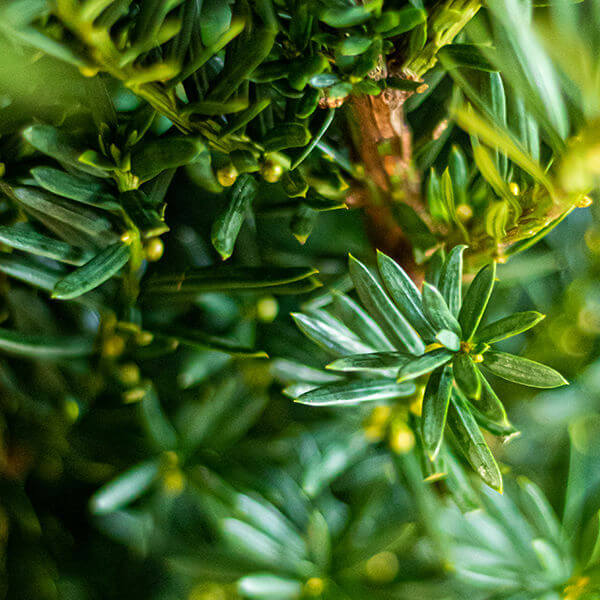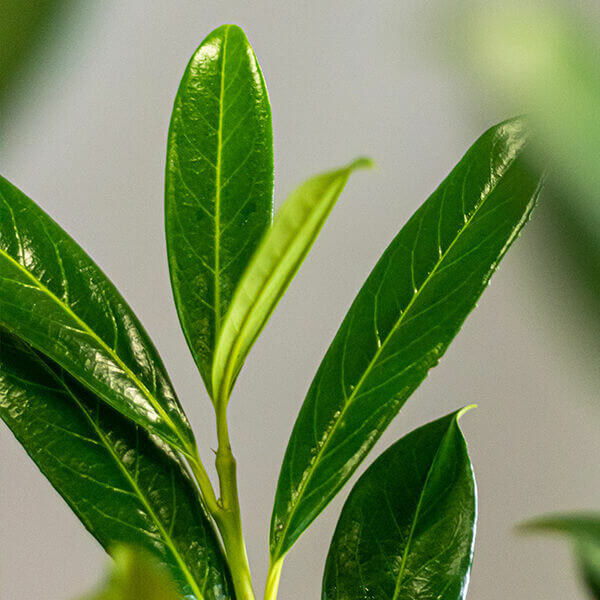Hedge Plants For Foliage Interest
Hedge Plants For Foliage Interest
Blog Article
Hedge Plants For Patio Edges
Boost your garden's attraction with lush hedge ranges such as Yew (Taxus), Thuja, Laurel, Photinia, and Bamboo, celebrated for their structural stability and environmental benefits.
Yew and Thuja supply evergreen coverage and winter strength, while Laurel provides rapid growth and broad, aromatic leaves.
Photinia adds seasonal appeal with its dynamic red foliage, and Bamboo lends a low-maintenance, serene ambiance.
These hedges enhance air quality, lower sound, and create tranquil, private spaces.
Correct planting, spacing, and maintenance guarantee vigorous development and eco-friendly consistency.
Check out how these rich ranges can raise your garden's beauty and well-being.
Secret Takeaways
Change Your Garden With Lush Hedge Ranges
- Select Yew for its dense, evergreen development and unequaled longevity.
- Choose Laurel for its fast development and broad leaves, making sure fast personal privacy.
- Choose Photinia for its dynamic seasonal foliage, which turns a striking dark red.
- Use Bamboo for a low-maintenance, winter-hardy hedge with aesthetic appeal.
- Area plants 2-3 per meter and prune frequently for optimum development and health.
Popular Hedge Plants
When changing a garden with lush hedge varieties, it's necessary to think about popular hedge plants such as Yew, Thuja, Laurel, and Photinia due to their special characteristics and benefits.
Yew (Taxus) is extremely respected for its durability and thick, green development, making it a prime option for enduring landscapes.
Thuja is noted for its evergreen foliage and robust winter strength.
Photinia includes seasonal vibrancy with red leaves that darken with time, producing vibrant visual appeal.
Laurel provides fast growth and fragrant, broad leaves, ideal for quick personal privacy.
In Addition, Bamboo is an exceptional option for atmosphere, offering a low-maintenance, winter-hardy option that enhances the garden's aesthetic with its classy, swaying walking canes.
These choices accommodate a range of horticultural needs and preferences.
Advantages of Garden Hedges
Garden hedges use a plethora of advantages, making them a valuable addition to any landscape. These natural barriers are affordable to carry out and offer considerable wind protection, boosting air circulation and contributing to sound reduction. The dense foliage of hedges like Thuja and Beech guarantees privacy by obstructing presence, producing a secluded and tranquil environment.
Hedges likewise play an important function in microclimate regulation, providing a steady environment that fosters plant development and lessens temperature variations. Their complex leaf structures filter toxins, improving air quality and adding to a much healthier garden environment.
Furthermore, hedges excel in sound reduction, soaking up and deflecting sound waves to lower ambient sound levels. This dual performance of providing both visual and acoustic personal privacy improves the overall serenity and aesthetic appeal of any garden.
Planting and Maintenance Tips
For an effective hedge, meticulous preparation of the planting area is crucial. Guarantee the soil has correct pH and drainage to support strong root development.
Area the plants appropriately for the selected types. Water the hedge often during its preliminary growth stage, changing as needed with seasonal modifications.
Implement a systematic bug control and illness prevention technique, utilizing chemical or organic treatments when required. Regularly check for aphids, mites, and fungal infections.
Apply mulch to keep moisture and suppress weeds. Seasonal pruning promotes dense growth and air blood circulation, essential for plant health.
Following these guidelines will help you cultivate a dynamic, well-kept hedge that boosts the beauty of your garden.
Spacing and Trimming Guidelines
Spacing and Trimming Guidelines
Appropriate spacing and cutting are important for cultivating healthy, aesthetically appealing hedges. Appropriate spacing guarantees each plant gets adequate nutrients, light, and air flow.
Follow these standards for ideal hedge upkeep:
- Spacing: Position hedge plants 2-3 plants per meter to motivate robust growth.
- Pruning Methods: Regular pruning is important for maintaining desired hedge height and shape. Trim brand-new development in summer season and cut down older wood during winter.
- Seasonal Care: Adjust cutting schedules and methods according to seasonal requirements to make sure plant health.
- Hedge Height: Frequently screen and trim to maintain the wanted hedge height and attain uniform visual appeals.
Abiding by these steps will ensure your hedge thrives, boosting both the appeal and performance of your garden.
Choosing the Right Hedge
Selecting the Right Hedge
Picking the proper hedge includes assessing aspects such as mature height, foliage density, and ecological resilience. Effective hedge plant selection requires comprehending each species' growth attributes and site-specific versatility.
For instance, Yew (Taxus) provides excellent longevity and dense development, while Thuja is notable for its winter season resilience. In addition, considering maintenance requirements is crucial; fast-growing types like Laurel or Privet demand routine cutting, whereas low-maintenance choices like Bamboo or Ivy may be more effective for those seeking very little maintenance.
Environmental aspects such as soil type, light availability, and wetness conditions should likewise assist the selection procedure. This careful method makes sure the chosen hedges will prosper, supplying both aesthetic and practical advantages to the garden landscape.
Shipment and Planting Guidance
To guarantee your hedge plants grow, they ought to be provided by specialized carriers and planted promptly upon arrival.
Follow these vital actions for effective planting:
- Soil Preparation: Enrich the soil with raw material to enhance drain and nutrient material.
- Planting Depth: Create a trench twice the width and equal to the depth of the root ball.
- Watering Strategies: Water completely after planting, keeping the soil consistently moist however not saturated.
- Mulching: Apply a layer of mulch to maintain moisture and reduce weeds.
Client Support and Service
Provided the crucial role of timely support in horticultural pursuits, our consumer support group is readily available 6 days a week through telephone, e-mail, and social networks to use skilled suggestions and quickly address any concerns. Their devotion to quick action times ensures customer complete satisfaction by solving inquiries related to plant health, ideal planting approaches, and upkeep schedules.

Accessibility
Within 24 hours
This extensive assistance system, enhanced by an excellent 9.3/ 10 customer rating, highlights our commitment to boosting the gardening experience for each customer.
Regularly Asked Questions
For How Long Does It Consider Hedge Plants to Develop?
Hedge plants normally need one to three years to become completely established, with the precise duration varying by types and growing conditions.
Effective care throughout this critical period is essential for robust growth. Consistent watering, vigilant weed control, and suitable fertilizer application are essential in promoting strong root advancement.
For instance, fast-growing species like Laurel may develop faster, while slower-growing ranges such as Yew might take longer. Persistent maintenance accelerates the facility procedure, resulting in dense and healthy hedges.
What Are the Finest Hedge Plants for Personal Privacy?
The question of the very best hedge plants for privacy includes assessing evergreen and deciduous choices.
Evergreen hedges like Thuja, Laurel, and Cypress provide year-round protection, ensuring continuous privacy.
In contrast, deciduous hedges such as Beech provide seasonal privacy, shedding leaves in colder months.
Secret maintenance suggestions for personal privacy hedges consist of regular cutting, fertilizing in spring, and correct spacing-- normally 2 to 3 plants per meter.
Furthermore, consistent watering and thorough weed removal are crucial for promoting healthy, thick growth.
Can Hedge Plants Bring In Wildlife to My Garden?
Yes, hedge plants can draw in wildlife to your garden by supplying vital advantages like shelter, food, and nesting websites, thereby boosting local biodiversity. For example, yew, holly, and laurel are outstanding for attracting birds, while ivy supports a variety of insects.
Nevertheless, it is necessary to keep in mind that there are some drawbacks, such as increased upkeep to manage insects and routine upkeep. Thoroughly picking and preserving hedge ranges can help balance these disadvantages and benefits, eventually fostering a sustainable and lively ecosystem in your garden.
Exist Any Blooming Hedge Plants Available?
Yes, there are flowering hedge plants available that can improve the appeal of your garden.
For instance, Elaeagnus, also called Olive Willow, produces aromatic white flowers in the fall, including a touch of elegance.
Photinia, another popular choice, showcases dynamic red leaves that grow into an abundant green, creating a dynamic visual result throughout the seasons.
To ensure these plants prosper, it's vital to practice proper pruning techniques and seasonal maintenance, such as trimming brand-new development in the summer season and cutting back in the winter.
These steps will help preserve the health and visual appeal of your blooming hedges.
How Do I Avoid Bugs in My Hedge Plants?
To avoid bugs in hedge plants, use natural bug control methods and maintain proper hedge care. Introduce advantageous insects like ladybugs, which take advantage of hazardous pests, to create a balanced ecosystem.
Regularly inspect your hedges for here signs of problem and promptly remove any afflicted parts to avoid the spread. Make sure the health of your hedges by using well balanced fertilizers and offering sufficient water.
Use mulching to retain soil moisture and correct spacing to lower plant tension and promote robust growth. These practices collectively assist in decreasing insect problems and maintaining a healthy hedge.
Conclusion
In essence, picking the ideal hedge varieties such as Yew, Thuja, and Laurel can transform any garden into a serene sanctuary. These plants offer year-round greenery, enhance aesthetic appeal, and deal useful benefits like sound decrease and wind protection.
Correct planting methods, accurate spacing, constant watering, and seasonal trimming are vital for optimum growth.
Dependable shipment services and professional customer assistance ensure a smooth experience from purchase to planting, making it simpler than ever to raise your outdoor area.
Garden hedges provide a multitude of advantages, making them a valuable addition to any landscape. These natural barriers are cost-efficient to execute and supply considerable wind defense, improving air blood circulation and contributing to noise decrease. The dense foliage of hedges like Thuja and Beech guarantees personal privacy by obstructing presence, creating a secluded and serene environment.

Pruning Methods: Regular pruning is essential for keeping preferred hedge height and shape. Trim brand-new development in summer and cut back older wood throughout winter season.
Report this page